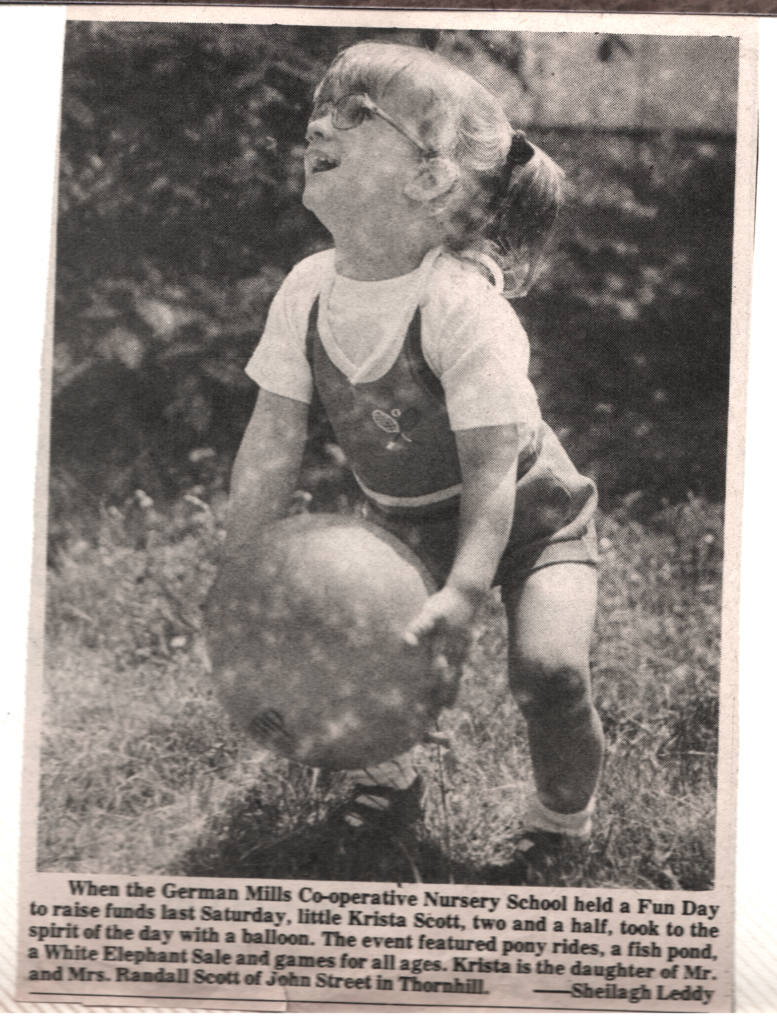F*** exercise. Try this instead.
When I say “exercise”, what comes to mind?
If you’re like most people, it’s at least one item on this list:
- Burning calories.
- Repentance for “being bad”.
- Losing weight.
- Something with “rules”.
- Something you should do because it’s “good”.
- Something you should do, but aren’t doing, you lazy bag of crap.
- Something you should do, but aren’t doing, because you’re too busy and don’t have time.
- Something that requires getting dressed up in funny outfits and going to places with loud screamy people and nasty music and clanking things and scary equipment that makes no sense.
- A chore.
Well, doesn’t that sound like a party you want to join?
Some time in the 1980s, I went from joyful movement and play to “exercise”.
I quit roller-skating, climbing trees, running around being a superheroine with a safety-pinned blanket cape, and jumping on the couch while headbanging to I Love Rock and Roll.
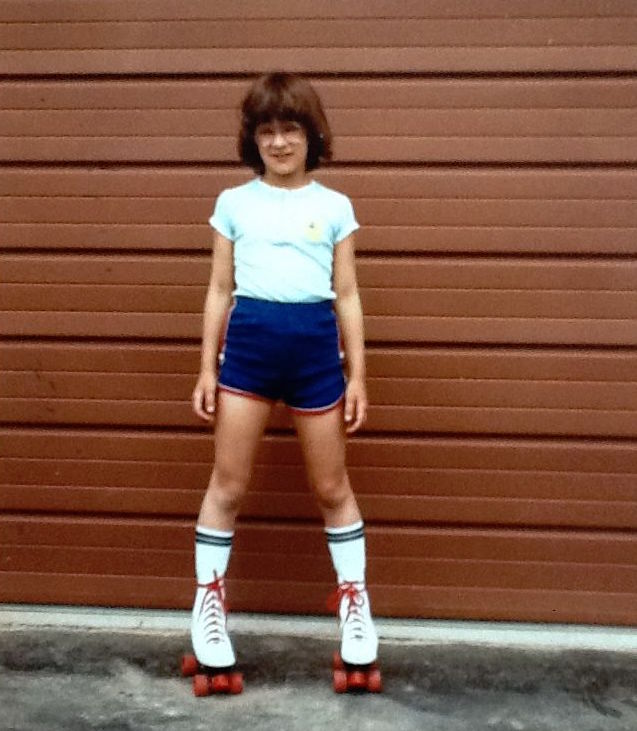
So rad in 1982 and didn’t even know it.
I started reading Shape magazine.
I went to aerobics classes in awkward, wedgie-giving leotards.
I rolled around on my living room floor doing the 20-Minute Workout, which I later learned was basically just ass porn that flew under the censors’ radar.
I put on Jane Fonda cassettes and humped the air to feel the burn.
(Millennials, “cassettes” are plastic things on which we would also record poor-quality songs from the radio and send to boys / girls we liked. If they rejected our “mixtape” gift, we could play it cool and pretend we were just sharing our love of music instead of crying ourselves to sleep at night.)
Thanks to “exercise”, I learned that I was broken and needed fixing.
“Exercise” wasn’t supposed to be fun! Duh!
It was a thing you did because you were bad and broken!
Because of your original sin of having a body, you have to hamster-wheel for all eternity like some Dante’s Purgatory!

Fitness class, circa 1320. Maybe not super fun, but everyone looks pretty jacked though.
As an oldest child and naturally conscientious Type-A, I accepted this call to service like Queen Elizabeth ascending the throne in 1952. I shall forevermore do my duty to my country of not being a gluttonous sloth!
Let’s skip the next 35 years of well-meaning yet self-punishing crap and get to the point.
You’re not broken.
I’m not broken.
Our idea of “exercise” in the 21st century is pretty fucking broken though.
What if you didn’t have to “exercise”?
What if there was something else you could do?
What if there was some other way you could think?
What if there was some other way you could feel?
What if you learned the wrong things about using your body and what it all meant?
Would you be willing to try something new?
I was.
I’d tried it all, done it all, seen it all. Or so it felt.
I wasn’t fixed yet though.
Suddenly it dawned on me: Either my ideas were wrong or my body was wrong, and since biology insists that you don’t survive to adulthood with a fundamentally broken physiological apparatus…
Maybe my ideas were wrong.
I started exploring new possibilities.
I don’t mean I tried a hot new class. Or that I finally found “the right workout for my unique and special body”.
I mean:
I started throwing out everything I thought and felt about “exercise” and what it meant.
Why I was doing it. What it involved. How it should feel. What it was supposed to do.
Everything.
Here’s what I discovered.
First, I tossed out the word “exercise”.
Too much baggage and bullshit. Bye-bye.
Out on the lawn, through the window.
Second, I added new words.
I will explain them to you below. Here they are.
- Movement
- Exploration and experimentation
- Capacity and resilience-building
- Mastery and skill
- Training
- Play and joy
- Soul
These words form the basis of my new approach. And, perhaps, yours too.
Here’s what they mean, how they work, and how you might put them into your routine.
1. Movement
It blew my mind when it dawned on me that body structures are governed by the laws of physics.
We are magnificent machines, intricate symphonies of levers and forces.
Consider the simple act of standing. Could you balance a human-sized, human-shaped piece of wood on its feet? No.
And yet… we balance. We balance long bodies on tiny platforms made of even tinier bones and squashy stuff.
Somehow a pro basketball player stretches his 7-foot frame towards the sky, leaping and throwing and dodging from two small origin points. Somehow a ballet dancer makes those origin points even tinier, and does the same thing.
How the hell does that happen?
Magnificent machinery, that’s how.
Movement is the sum of all the possible angles and configurations our machines can produce.
Muscles and tendons pull on bones in a coordinated sequence along specific lines. Connective tissues produce and store elastic energy or bind structures together. Joints swing and flex and extend. Soft tissues cushion and ripple and shift. Our centre of mass tips and totters. Our cells busily convert chemicals from food into energy.
The combinations of these simple things are nearly infinite.
Look at your hand, and all the ways this single body part can move.
You can grasp, and gesture, and point, and poke, and punch, and write, and wave, and sign, and play the piano, and smash the heel of your hand on a table to make a point.
That’s just one part.
Now think about all the parts, together.
What about if hand joined arm and shoulder? Now you have even more variables.
Movements on movements on movements. Possibilities on possibilities.
Already this is getting more exciting.
And you’re wondering: What could I do with all of this?
2. Exploration and experimentation
Watch a toddler. They are pure movement experience.
Everything is exploration and experimentation.
What happens if I do this? Or that? Or taste this? Or touch that?
How does this sound? How does this feel?
How does this part move?
What happens if I stick my foot in my mouth? What happens if I jam a bean in my ear?
Everything is investigation, curiosity, and learning. Trial and error. Sensation. Perception. Iteration.
They are discovering their bodies for the very first time, without judgement.
As you move, you can experiment and explore.
- What does this joint do? What are all the ways it can move?
- What feels good? What doesn’t feel as good?
- What feels loose? What feels restricted?
- What is painful? What is difficult?
- What is easy and free?
- What happens if you adjust the parameters — a shift in position or weight, a different angle, more or less pressure or speed? Does that change anything? How so?
Exploration and experimentation requires curiosity, observation, and awareness.
You must be “checked in”, sensing and perceiving, noticing and recording data.
3. Capacity and resilience-building
In some ways we are like machines, but in other ways, as biological organisms, we are special: We heal ourselves.
We can actively build capacity, resourcefulness, and resilience.
We don’t have to live with all of our factory settings.
We can change, grow, heal, repair, survive, get stronger, get bigger inside, get wiser.
Even though this process slows as we age, we are always doing it. We can’t not rebuild. We can’t not learn.
Few of us ever reach our true, abundant capacity.
In part, that’s because our capacity grows with us.
In part, that’s because we are born with very, very big tanks to fill — bigger than most of us can imagine… unless we test them. (See exploration and experimentation, above.)
One of my favourite coaches, Craig Weller, is fond of saying that it’s very difficult to break your body.
Of course, this doesn’t mean you should go crash your motorcycle or leap off a tall building while screaming I’m invincible!!
It means that your capacity is probably bigger than you think, and with practice, you can make it bigger and bigger.
Build a bigger engine. Build a bigger tank. Build a stronger foundation.
Build better and sure-er reflexes. Build more confident movements.
Aim to jump higher, hit harder, run faster, and build a more robust heart-lung machine, denser bones, steel-whip tendons, smooth and silky joints.
Build agility — switching directions nimbly. Build flexibility — bending without breaking. (Hint: These are metaphorical and literal, geddit?)
Build physical problem-solving. Build the capacity to survive, then thrive.
Build the capacity to fall apart and rebuild.
Build the capacity to eat lightning and crap thunder.
Even if you end up eating static electricity and crapping a kazoo noise, you’re still well ahead of the game.
4. Mastery and skill
Building capacity is all very well, but how? This is where mastery and skill practice come in.
Almost all things are negotiable. Almost all things can be learned, and practiced, and improved.
You will probably never be the best at anything. That’s not the game here. (Even if you are the best, that probably won’t last anyway.)
The game here is practicing. The game here is putting in the reps.
The game here is doing something, and looking at what happened, and getting feedback, and using that feedback to adjust yourself, and then doing that thing again, and then looking at what happened again, and getting more feedback, and adjusting again.
Over and over and over and over.
Mastery and skill are much different than perfection or performance.
Mastery and skill development are processes.
They are things you show up to do. They are things you bring into being. They are things that emerge fresh with each moment.
They are not things you are. They are not getting a gold star or a trophy. You can do your best and never win a damn thing.
Mastery doesn’t care about winning. Winning is nice, but it’s an accidental side effect of mastery.
Mastery cares about growth, and deepening, and enrichment, and understanding.
5. Training
The word “discipline” has a bad rap.
If you say you like to eat healthy food and get regular movement, people often say, “Oh, you’re so disciplined“. We talk about disciplining children or naughty leather-clad slaves, or having self-discipline in a way that’s synonymous with being ascetic buzzkills.
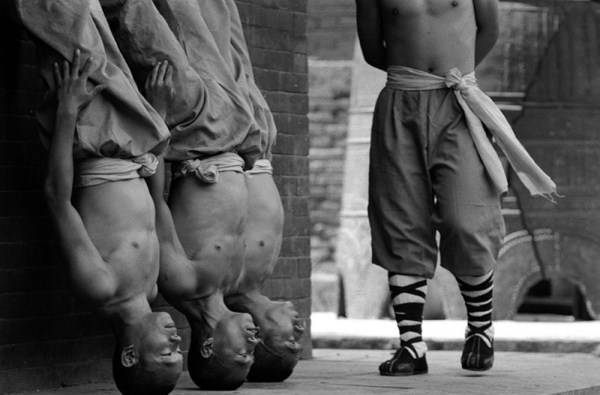
Just another discipline day at the Shaolin monk office.
This is fair — one meaning of “discipline” originates in the 11th century Old French word descepline, implying “penitential chastisement; punishment; martyrdom; suffering”.
But another meaning of “discipline”, more analogous to the ancient Latin discipulus, refers to a program of instruction. This also relates to the word disciple — a student or follower.
You know Michelangelo? No, not the Ninja Turtle. The Renaissance artist. The guy who painted this:
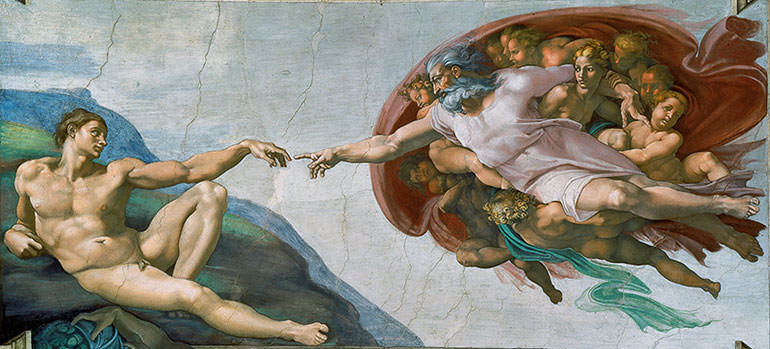
Pretty clear genius. There are 341 more figures as good as those ones.
Guy just probably woke up one day and busted that out. Right?
Here’s what Michelangelo wrote about working for four years on the Sistine Chapel ceiling:
I’ve grown a goitre by dwelling in this den…
Which drives the belly close beneath the chin:
My beard turns up to heaven; my nape falls in,
Fixed on my spine: my breast-bone visibly
Grows like a harp: a rich embroidery
Bedews my face from brush-drops thick and thin.
My loins into my paunch like levers grind:
My buttock like a crupper bears my weight;
My feet unguided wander to and fro.
In front my skin grows loose and long; behind,
By bending it becomes more taut and strait;
Crosswise I strain me like a Syrian bow…
Must be the fruit of squinting brain and eye.
In other words, Michelangelo had to show up and do the work. Just like the rest of us.
He started learning about marble around age 6, and started his apprenticeship at 13.
So yeah, he was pretty damn good by the time he was in his prime. Because he fucking practiced. A lot.
As talented as he was, if he hadn’t practiced, he’d be making stuff more like this:

Discipline — consistently following a focused path of development and learning — is also what enables us to express ourselves beautifully.
We can make beautiful music only when we master an instrument. In this case, the instrument of expression is your body.
Which brings me to the concept of “training”.
Training is a way that you can move, experiment, and build skills as you work towards a specific goal.
You never have to “train”, of course. You can stay at experimental and exploratory movement forever, if you want.
But if you want to do something specific, you can train.
Training, like mastery, implies a kind of directed and focused practice.
Training is deliberate movement with a purpose.
6. Play and joy
When was the last time you really laughed — like a ha ha ha where milk came out of your nose and your stomach hurt afterwards?
When you did some stupid shit? When you goofed around?
When you did physical things (unlike training) with no purpose?
Play is the opposite of training. Play has no purpose other than itself.
We benefit from both training and play.
Play is open-ended and goal-less (or with made-up silly goals, like “Let’s see who can throw the couch cushions highest into the tree”).
Play is joyful, inquisitive, broad-spectrum movement that exists for its own sake.
Play is the physical manifestation of happiness, curiosity, and flow.
7. Soul
I don’t mean religious stuff here. I mean that part of yourself that is intangible. The deep core of “you”.
What movement feeds and fills your soul?
What movement taps you into your own passion, zest, alive-ness? Lets you huff the pipe of being present in the world?
What movement makes colours brighter, edges sharper, feelings richer?
What movement makes you forget about petty bullshit and your own foolish insignificant mortality, and connects you to something deeper?
What slaps you in the face with the ice bucket challenge, leaving you tingling and refreshed? What plugs in an IV of vitality?
What leaves you feeling like Damn, YES?
That’s your soul movement.
OK, what does this all mean?
Let’s make this real.
Sit down with a piece of paper and a writing stick.
For each category, write down things that could live there.
- Movement
- Exploration and experimentation
- Capacity and resilience-building
- Mastery and skill
- Training
- Play and joy
- Soul
For example:
Movement
- Walking
- Crawling
- Hauling
- Pushing
- Throwing
Exploration and experimentation
- Testing my balance on a surfboard or rocky beach
- Seeing what happens when I do X
- Discovering how to move my feet or hands
- Exploring how it feels to move like Y
Capacity and resilience-building
- Longer hike than I’ve ever tried
- Mobility work that conditions my joints and helps me move more effortlessly
- Purposely trying something scary, with the help of a trusted team
- Gentle movement that helps me recover
Mastery and skill
- Working on a piece of skill X
- Drilling a movement segment — the swing of my arm in a swim stroke, the upward joust of my knee in a sprint stride, the shift of my hips for a throw
- Actively getting feedback on my performance — Do I stay on the surfboard, the skateboard, the skis, the horse? If not, what shall I change? If yes, what could I do better and more of?
Training
- Skills class with Coach X
- Scheduling 15 minutes a day to practice Technique Y
- Moving with a specific purpose
Play and joy
- Moving with no specific purpose
- Throwing a Frisbee to your dog
- Dancing like no-one is watching… or maybe everyone is watching and Ima crush this breakdance fighting
Soul
- Climb a fucking mountain or some shit.
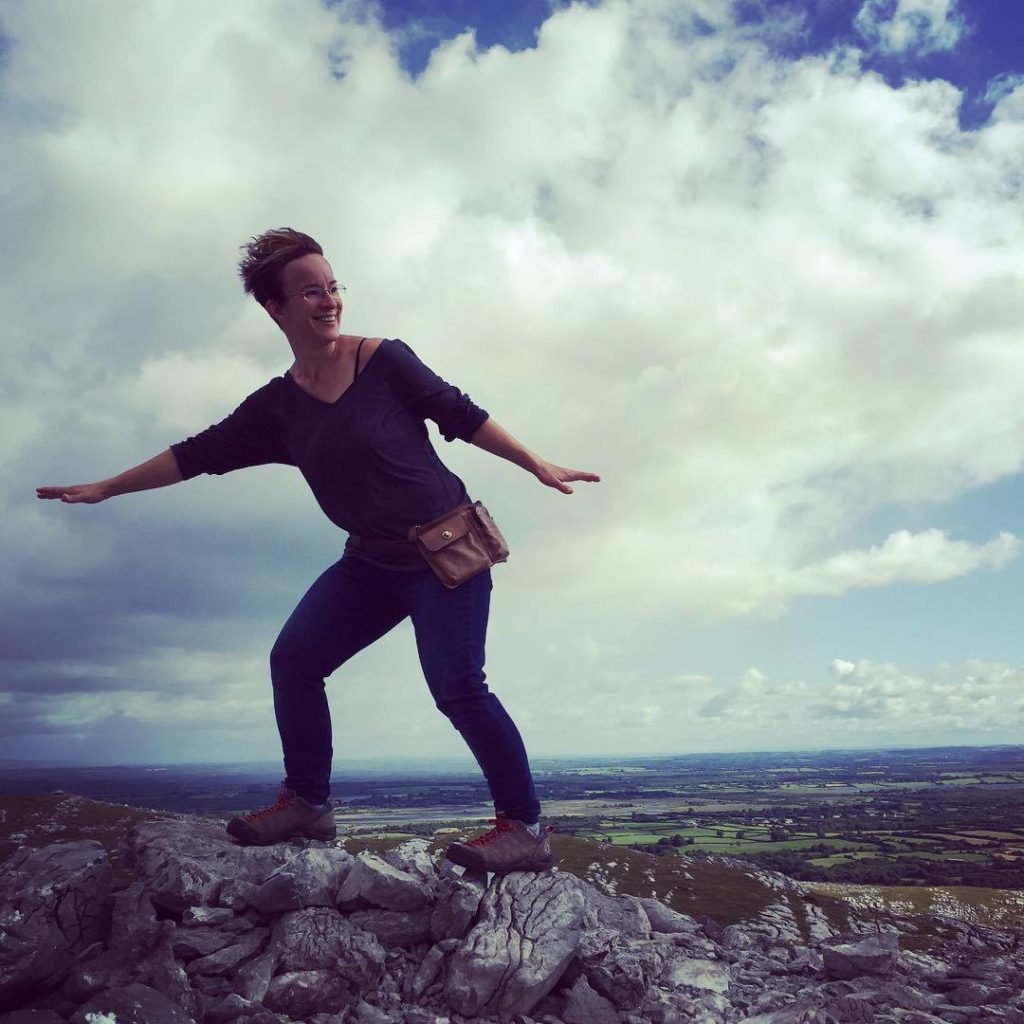
Once you have your list of possible activities, decide how much time you want to put into each.
Unless you need to train for a specific goal (for instance, you are a competitive athlete), I suggest you organize it like this — as a pyramid with movement, exploration / experimentation, and capacity-building at the base.
The base is where you should spend most of your time, energy, and attention.
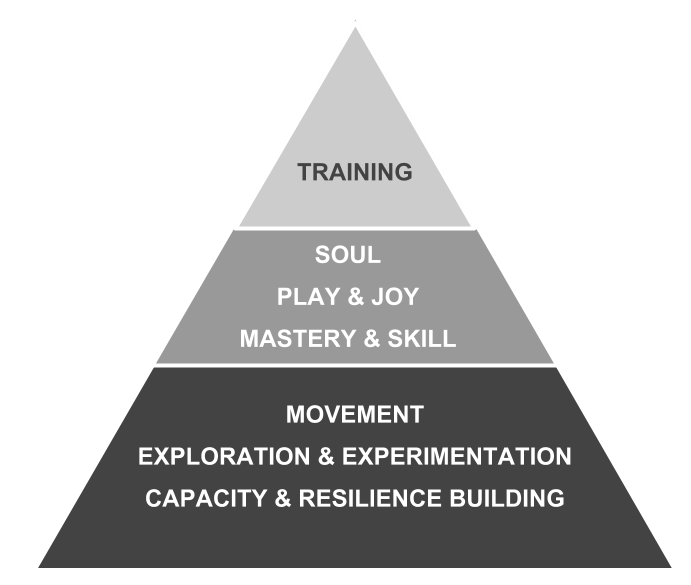
Organizing things like this will mean that you’ll spend lots of time doing open-ended movement that nevertheless makes you better, stronger, more capacious, more resilient, more flexible in all senses of the word, more well-rounded, probably happier.
Of course, it’s up to you.
How you organize this depends on what you’re seeking.
- If mastery and skill are more your bag, shuffle “training” a little, maybe swap it out with “play and joy” so there’s a little more drilling and a little less farting around.
- If you’re looking for deep restoration, add more “soul” and feel free to ditch “training” completely for a while.
- If you’re rehabbing an injury or looking for new activities in a new phase of life, maybe make “exploration and experimentation’ the biggest piece.
There are no rules, only what YOU want and need.
Only questions YOU wish to answer; goals YOU want to meet (or do without); areas of life YOU wish to explore.
Test and iterate.
Try some stuff.
See what works.
If it works real good, do more.
If it works so-so, take a note and plan to re-visit it later, to see which way it’s going.
If it don’t work so good, do less. Change it. Try another hypothesis. It’s all just data.
Fuck exercise.
Play. Move. Experiment. Explore. Practice. Learn. Grow.
Buy yourself some sweet-ass roller skates and hit the road!
And may you one day feel about whatever you used to call “exercise” like I felt about this balloon in 1976.
